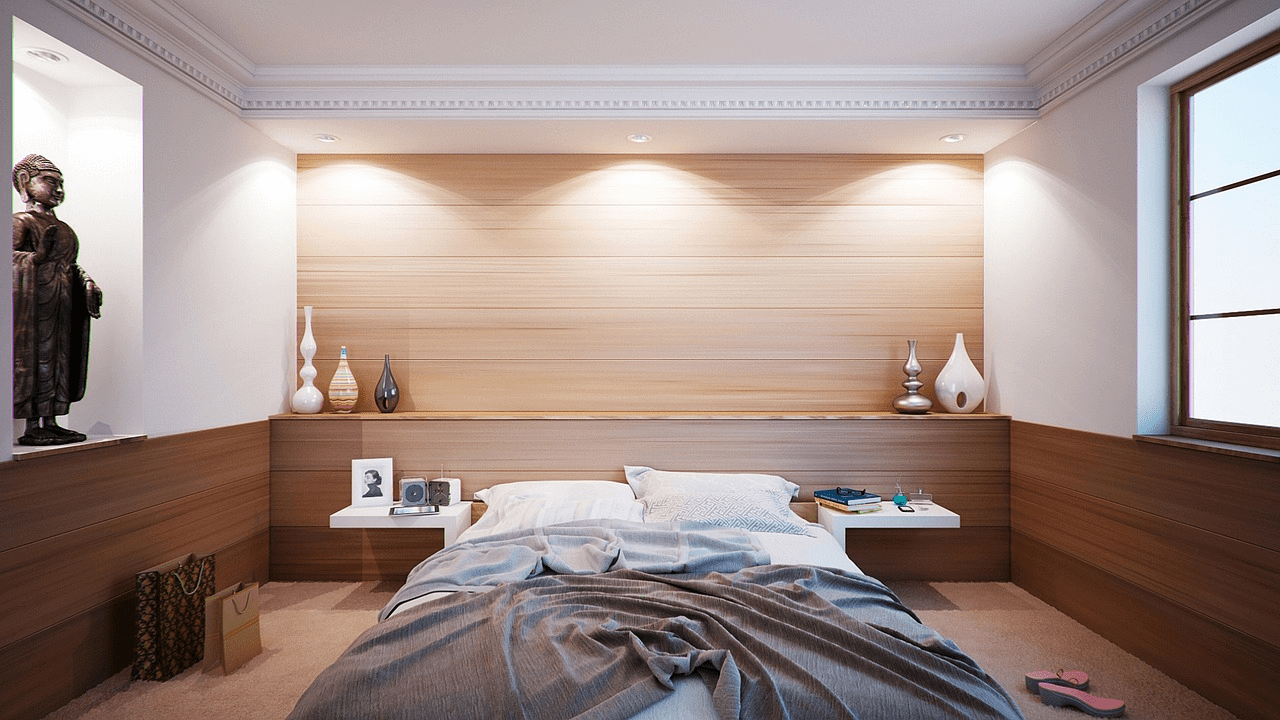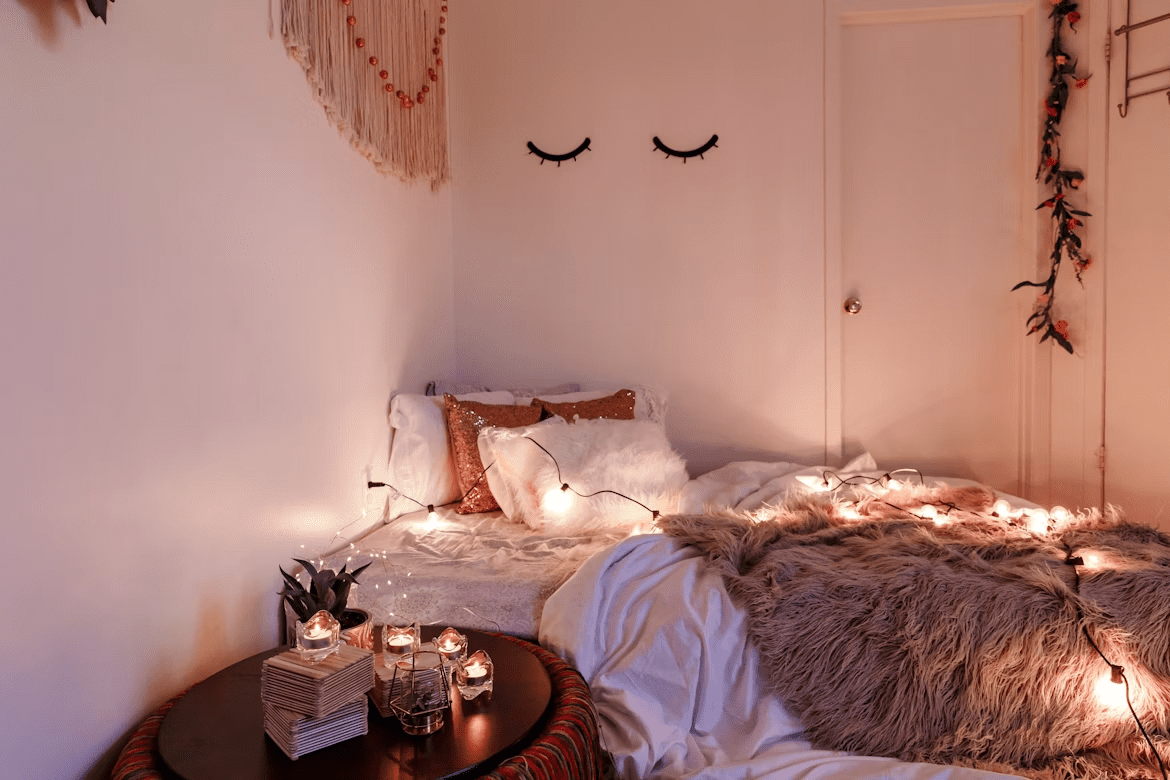Decorating your sleeping space should reflect your personality, comfort preferences, and style. A well-designed bedroom enhances the aesthetics of your home and creates a sanctuary for rest and rejuvenation.
In this article, we will explore various creative concepts that will transform your bedroom into a cozy retreat. From color schemes to innovative decor ideas, there’s something here for everyone looking to refresh their sleeping space.
Choosing the Right Color Palette
When decorating your sleeping space, the choice of color plays a vital role in setting the mood. Soft hues, such as blues and greens, promote calmness and tranquility, ensuring a peaceful environment for rest.
Warmer colors like yellows and reds can energize the space, but may not be ideal for nighttime relaxation. Use a neutral base and add splashes of color through accessories like cushions or wall art.
Accents with bold or contrasting colors enhance visual interest while maintaining a sense of harmony. To elevate your room further, explore different finishes, such as matte or satin, that can play with light and shadow, creating a dynamic feel.
Understanding how colors interact with light can help you achieve the desired effect throughout the day. Early morning sunlight, for instance, can wake up soft tones, while shade can mute bright colors. It is important to think about not just the colors you like but how those colors will make you feel.
Accessorizing with Personal Touches
Adding personal touches to your bedroom decor enriches the atmosphere and makes the space feel uniquely yours. Accessories like cushions, throws, and decorative objects personalize your sleeping area while enhancing comfort and style. Fabrics with various textures can add depth, appealing to the senses and encouraging a cozy environment.
Throw blankets artfully draped over the bed can invite you to snuggle in, while different fabric patterns can initiate conversations about your interests and travels. When it comes to wall decor, finding inspiring bedroom wall art ideas can transform blank walls into the room’s focal point. Artworks that resonate with you, whether photography, abstract pieces, or handcrafted items, add a narrative to your space.
Incorporate family portraits, travel souvenirs, or even inspirational quotes framed in all sizes and styles to give your bedroom a sense of history and connection. Be mindful of balance when displaying accessories, too many pieces can overwhelm the room. Create a cohesive look by using a consistent color scheme or theme throughout your accessories.
Selecting Furniture with Purpose
Furniture selection can significantly influence the functionality and aesthetic of your sleeping space. Choosing pieces that not only look good but serve a practical purpose is key. A bed with integrated storage can maximize space, making it ideal for smaller bedrooms.
Look for headboards with shelving or drawers that can hold books, personal items, or extra bedding, helping to keep clutter at bay. When considering layout, ensure your furniture does not obstruct pathways.
A bedside table on each side of the bed offers convenience and enhances symmetry. Opt for furniture that complements the color scheme while reflecting your personal style. Vintage finds can add character, while sleek modern designs can contribute to a minimalist feel.
Creating Ambiance
Lighting is one of the most important aspects of bedroom design. A well-lit room can dictate the atmosphere. Incorporating various light sources, like bedside lamps, overhead lighting, and natural light, will allow you to adjust brightness levels based on your needs.
Ambient lighting provides illumination, while task lighting focuses on specific areas, such as reading nooks or dressing spaces. Use adjustable fixtures that allow you to change the height and intensity of light. A layered lighting strategy can create a cozy, inviting atmosphere perfect for relaxation.
For a touch of intimacy, opt for warm white bulbs or dimmers that allow you to control brightness easily. Natural light is equally important, utilize sheer curtains to let in daylight while maintaining privacy.
Incorporating Nature into Your Space
Bringing elements of nature into your bedroom enhances aesthetics and promotes a sense of well-being. Houseplants create an inviting atmosphere while improving air quality. Research shows that indoor plants can reduce stress and boost mood, making them an excellent addition to your sleeping space.
Think about low-maintenance plants like succulents or pothos if you’re new to gardening. For larger impacts, choose statement plants, such as a fiddle leaf fig or snake plant, to serve as focal points.
Arrange smaller pots on nightstands or shelves to create a cohesive look. Natural materials can complement plants beautifully. Wooden frames, wicker baskets, and stone accents subtly connect your decor to nature.
Use textiles made from organic materials, like cotton and linen, to enhance the theme. Creating a nature-inspired bedroom will look beautiful and provide a soothing and restorative environment.

Creating a Cozy Reading Nook
A reading nook can transform a corner of your bedroom into a peaceful retreat for relaxation. Use a comfortable chair or a chaise lounge with ample cushions to invite long reading sessions.
Choose a location near a window if possible, allowing natural light to enhance your experience. Incorporate a small bookshelf or a side table for convenience, keep your favorite books and a warm beverage close at hand.
This personal space enables you to unwind while immersing yourself in your favorite stories. Sheltering your nook with carefully placed curtains or a decorative screen can create an intimate setting. Add warm lighting, such as a floor lamp or fairy string lights, to establish a cozy atmosphere.
The ambiance of warm light encourages readers to lose themselves in pages, making the nook both functional and inviting. A thoughtfully designed reading nook becomes a stylish addition to your bedroom that enhances relaxation and promotes the joy of reading.
Decorating your sleeping space offers limitless possibilities to create an environment that promotes relaxation, comfort, and personal expression. By thoughtfully choosing your color palette, furniture, lighting, accessories, and incorporating nature, you’ll cultivate a sanctuary tailored to your tastes and needs.





























